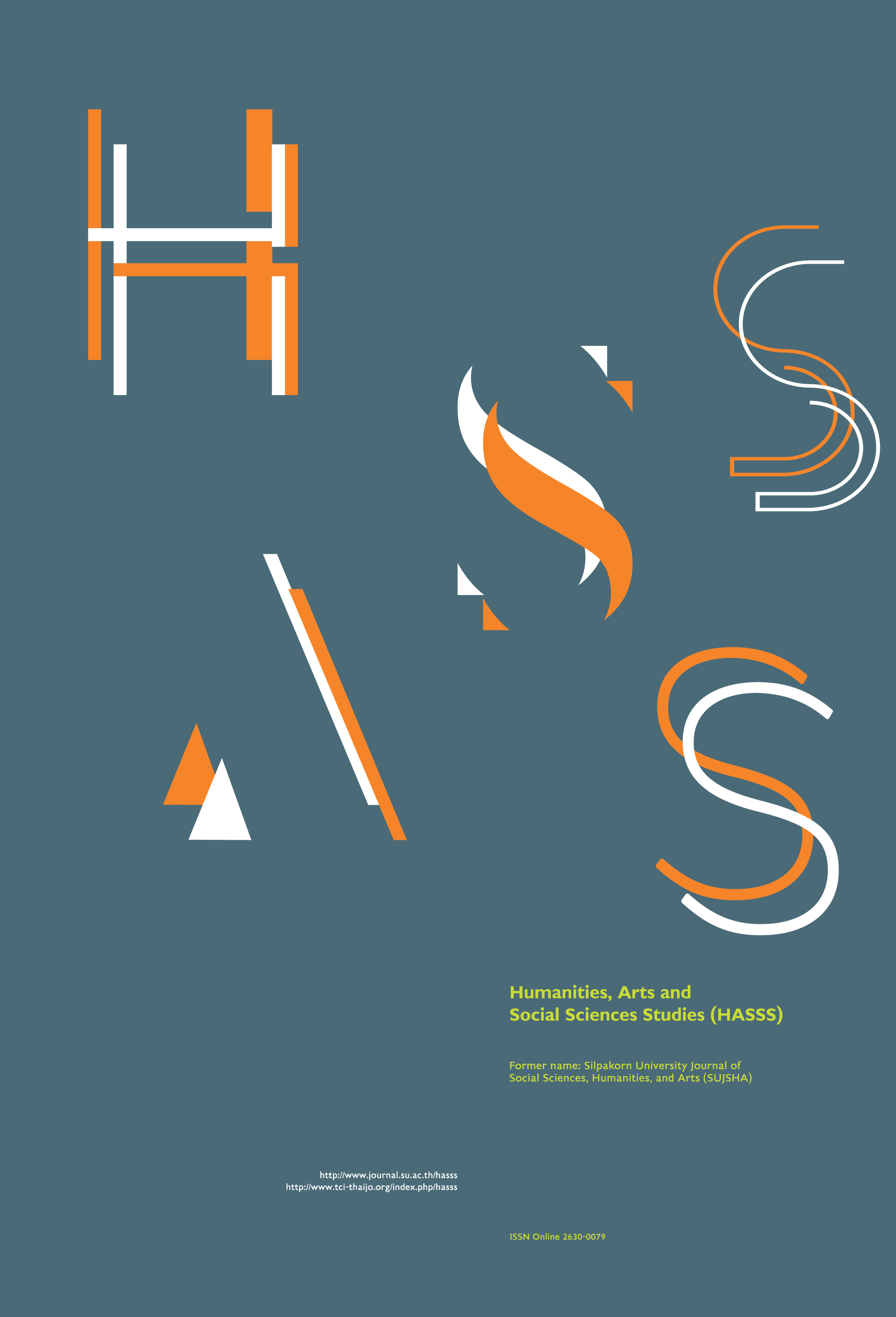Ritual Sovereignty in Siam: Royal Sacraments and Brahmanical Liturgies in Ayutthaya and Rattanakosin
Main Article Content
Abstract
Although Thailand’s population is predominantly Buddhist, many customs and traditions are deeply rooted in the Vedic rituals of ancient India; the rites of passage and associated rituals known in Sanskrit as saṃskāras, which are performed in the Thai court, clearly demonstrate this fact. The Indic saṃskāras are sixteen in number, comprising ceremonies to mark different stages of one’s life: from birth to death. Similarly, the courtly ceremonies of Thailand have the same functions, but they are also conducted for the benefit of the population and are not limited to the personages of the court. Moreover, Brahmanical rituals utilising Śaiva and Vaiṣṇava hymns from south India namely the Tiruveṃpāvai and Tiruppāvai are also carried out, thus suggesting that Hinduism once played the central role in the socio-religious backdrop in the kingdom. The sources of these rituals, both courtly and public, can be found in The Royal Ceremonies of Twelve Months written by King Chulalongkorn who expounds them in great detail. Apart from outlining the significance of rituals and connecting them to the courtly protocols of the Ayutthaya period, Chulalongkorn provides glimpses into the 19th-century royal ceremonies. In the present era, these rituals can still be observed in the palace and are officiated by the court Brahmins who claim ancestry from the early Indian diaspora in the present-day Thailand. Besides presenting the history and practices of Thai Brahmins, this paper also aims to compare the royal rituals with the Indian saṃskāras. Additionally, it aims to highlight the role of Brahmins in the Thai court and how their sacred liturgies ordain the king with the ritual sovereignty in exchange for the royal patronage that supports their livelihood and sustains their existence.
Downloads
Article Details
All rights reserved. Apart from citations for the purposes of research, private study, or criticism and review,no part of this publication may be reproduced, stored or transmitted in any other form without prior written permission by the publisher.
References
Cœdès, G. (1968) Indianized States of Southeast Asia (S. Cowing, Trans.). Hawaii: University of Hawaii Press.
Geertz, C. (1981) Negara: The Theatre State in Nineteenth-Century Bali. Princeton: Princeton University Press.
Goudriaan, T. (1985) The Vīṇāśikhatantra: a Śaiva tantra of the left current. New Delhi: Motilal Banarsidass.
Kamaek, B. (2007) Influence of Brahmanism and Hinduism in Early Rattanakosin. Unpublished Research. Faculty of Archaeology, Silpakorn University, Bangkok, Thailand.
King Chulalongkorn. (2017) The Royal Ceremonies of Twelve Months. Bangkok: National Library of Thailand Cataloguing in Publication Data, Thai Quality Books.
McGovern, N. (2017) Balancing the foreign and the familiar in the articulation of kingship: The royal court Brahmans of Thailand. Journal of Southeast Asian Studies 48(2): 283-303.
Pandey, R. (2013) Hindu Saṃskāras: Socio-Religious Study of the Hindu Sacraments. 2nd ed. New Delhi: Motilal Banarsidass.
Phaikaew, S. (2006) Status and Roles of Brahmins in the Court of King Rāma I. Unpublished Master’s Dissertation. Ramkamhaeng University, Bangkok, Thailand.
Prasad, C. R. (1997) The Upanayana: the Hindu Ceremonies of Sacred Thread. New Delhi: Motilal Banarsidass.
Quaritch Wales, H. G. (1992) Siamese State Ceremonies: Their History and Function. London: Curzon Press.
Singhal, D. P. (1969) India and World Civilization. 1st ed. Michigan: Michigan State University Press.
Staal, J. F. (1963) Sanskrit and Sanskritization. The Journal of Asian Studies 22(3): 261-75.
Stein, B. (1989) Vijayanagara. Cambridge, New York: Cambridge University Press.
Vickery, M. (1998) Society, Economics, and Politics in Pre-Angkor Cambodia; The 7th-8th CenturiesTokyo: Centre for East Asian Cultural Studies for Unesco.
Wolters, O. W. (1979) Khmer “Hinduism” in the seventh century. In Early South East Asia: Essays in Archaeology, History, and Historical Geography, edited by Ralph B. Smith and William Watson, pp. 427-443. New York: Oxford University Press.


